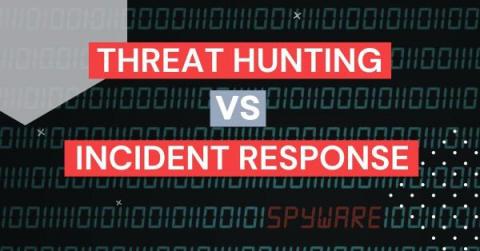Security | Threat Detection | Cyberattacks | DevSecOps | Compliance
Incident Response
Incident Response Service Breakdown
Incident response is a comprehensive approach to dealing with potential security incidents, such as unauthorised access, data breaches, and malicious attacks that might affect an organisation’s network. The goal of incident response is not just to contain the threat but also to learn from it by understanding what happened, why it happened, and how it can be prevented from happening in the future.
Threat Hunting vs Incident Response for Cyber Resilience
Effective AWS Incident Response: Examples and Recommendations
The use of Amazon Web Services (AWS) in organizations around the world is prolific. The platform accounted for 31% of total cloud infrastructure services spend in Q2 2022, growing by 33% annually. Despite its widespread use, many organizations still fail to consider the nuances of incident response in AWS.
Effective Cloud Incident Response: Fundamentals and Key Considerations
Human error behind misconfigurations, a host of insecure remote access issues, exposed business credentials with reused passwords and unpatched vulnerabilities have all contributed to a significant increase in cloud security incidents. Many organizations don’t foresee the challenges of what it will take to protect their data and operations after a move to the cloud.
Top 15 Cyber Incident Response Use Cases
As technology continues to advance, the risks of cyber threats and data breaches become more prevalent. That's why having a proper incident response plan and building an effective incident response team is essential to mitigating the damages of a cyber incident. According to a study by the University of Maryland, a cyber attack occurs every 39 seconds on average. For businesses, the stakes are high, and a data breach can result in significant losses, both financial and reputational.
Stages of SANS and NIST Incident Response Frameworks
Cybersecurity incident response is an essential aspect of modern organizational security. In the event of a security breach or any other security-related incident, it is crucial to have a well-defined process to minimize the impact of top cyber security threats and recover from them as quickly as possible. Two of the most widely used frameworks for incident response are SANS and NIST.
10 Tips to Improve Incident Response Strategy
Cyberattacks are increasing in frequency and sophistication, and it's only a matter of time before a security incident occurs. When it does, having a comprehensive and effective incident response strategy can make all the difference in mitigating the damage and minimizing the impact on your organization. In this article, we will provide tips and best practices for improving incident response strategy.
Arctic Wolf Incident Response
What is a Disaster Recovery Plan? + Complete Checklist
A disaster recovery plan (DRP) is a set of detailed, documented guidelines that outline a business’ critical assets and explain how the organization will respond to unplanned incidents. Unplanned incidents or disasters typically include cyber attacks, system failures, power outages, natural disasters, equipment failures, or infrastructure disasters.








